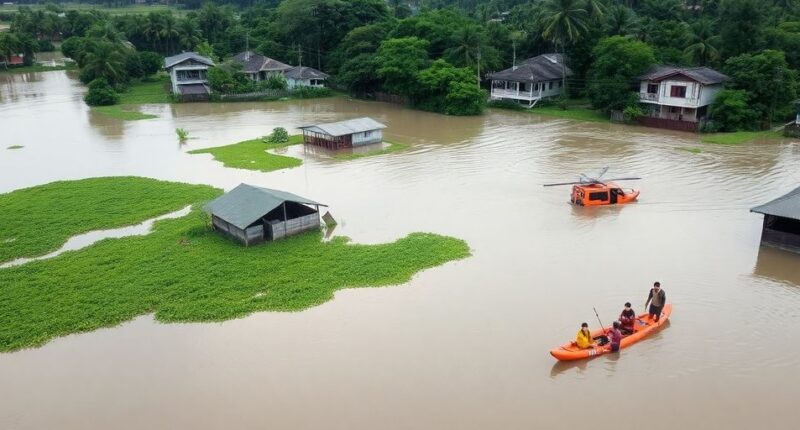Devastating floods in Malaysia have led to significant health and agricultural challenges, prompting urgent responses from health volunteers and government officials. With over 40,000 people still in temporary shelters and fears of waterborne diseases rising, the situation remains critical as the country braces for more rain.
Key Takeaways
- Over 40,000 people remain in temporary shelters due to flooding.
- Health volunteers are on alert for waterborne diseases.
- More than 380 square kilometers of paddy fields have been damaged.
- Government assistance for affected farmers is being considered.
Health Risks From Flooding
The recent floods have raised alarms about potential health risks, particularly the spread of waterborne diseases. Health volunteers, including those from the Malaysian Medical Relief Society, are actively preparing for a possible surge in cases. They have stockpiled hygiene kits and are monitoring the situation closely.
As of now, nearly 5,000 cases of infectious diseases, such as stomach flu and skin infections, have been reported in relief centers across the worst-hit state of Kelantan. The government is concerned about the health of children, many of whom have been seen playing in contaminated floodwaters, increasing the risk of illness.
Agricultural Impact
The floods have also wreaked havoc on Malaysia's agricultural sector, particularly in rice-producing regions. Reports indicate that over 38,000 hectares of paddy fields have been submerged, with significant damage occurring in Kedah and Kelantan. Farmers are facing severe losses, as many of the affected crops were newly planted or nearing harvest.
- Kedah: Approximately 12,600 hectares affected, impacting around 6,000 farmers.
- Kelantan: Over 26,000 hectares damaged, with farmers unable to plant for three consecutive seasons.
Agriculture and Food Security Minister Mohamad Sabu has acknowledged the situation, stating that the government is exploring various forms of assistance for affected farmers, including financial support and recovery programs.
Government Response
In light of the ongoing crisis, the Malaysian government is taking steps to address both health and agricultural concerns. The Meteorological Department has warned of a monsoon surge expected from December 8 to 14, which could exacerbate the flooding situation.
Officials are working to ensure that health volunteers are equipped to handle any potential outbreaks of disease and that farmers receive the necessary support to recover from their losses. The total estimated losses in the agricultural sector in Kelantan alone are projected to exceed 16 million ringgit, with further assessments ongoing.
Community Support and Preparedness
Local communities are rallying together to support those affected by the floods. Health volunteers are not only distributing hygiene kits but also organizing activities for children in shelters to minimize their exposure to health risks. This community-driven approach is vital in ensuring that the most vulnerable populations receive the care and support they need during this challenging time.
As Malaysia navigates the aftermath of these devastating floods, the focus remains on safeguarding public health and supporting the agricultural sector to recover and rebuild. The resilience of the Malaysian people, combined with proactive measures from health and government officials, will be crucial in overcoming this crisis.
